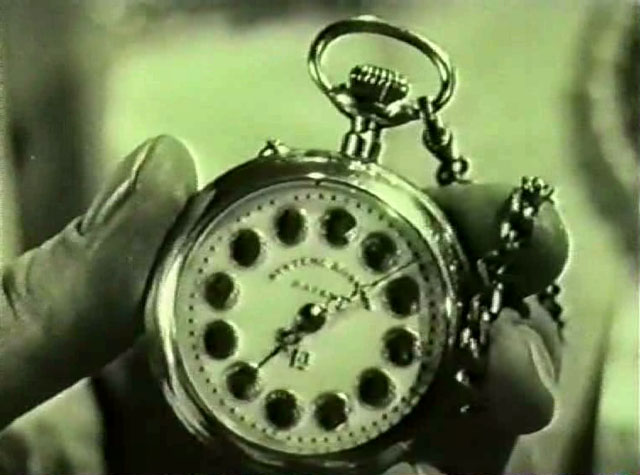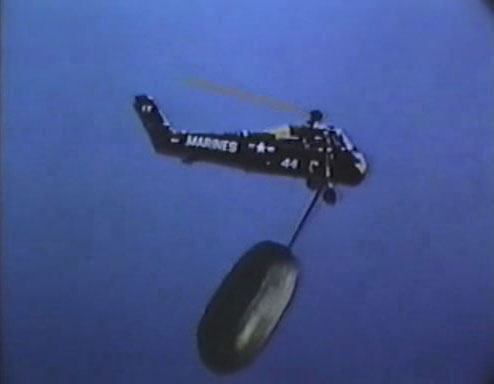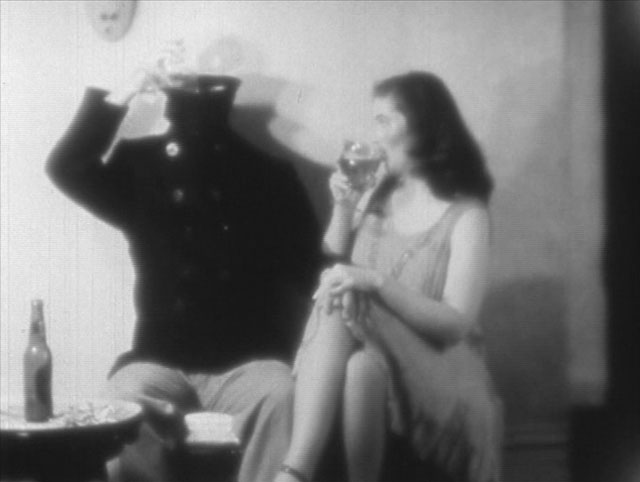As I said, reading the Canyon Cinema book just made me want to see more of their films, and so I held a solo screening of some video reproductions of films from their archives.
Notes on the Circus (1966, Jonas Mekas)
Doc footage from his seat at the Ringling Bros. circus, edited to a pulp after the fact, divided into four sections.
1. nervous, jittery views of circus acts: trapeze, clowns, animal acts.
2. more of the same, but towards the end of this section the editing goes hyper and adds superimpositions.
3. picks up where the end of 2 left off. This is likely more fun than an actual circus.
4. all energy, focus be damned.
The guitar/harmonica folk music worked pretty well alongside the images. Mekas repeats songs just as he repeats shots (the same woman doffs her white coat and ascends the trapeze at least three times).
Canyon claims “no post-editing of opticals,” so was he rewinding and re-exposing the film while sitting at the circus?

Here I Am (1962, Bruce Baillie)
A pre-Wiseman verite doc on a local school for mentally disturbed children. Why is the caretaker giving the kids cigarettes?!? Non-sync sound (no narration) with added cello. Nicely paced, and very well preserved. Canyon called it “never before released,” but before when? The DVD notes say it was part of a homegrown newsreel program. “Like the school itself, the camera gives the kids center stage and moves at their pace.”

Fake Fruit Factory (1986, Chick Strand)
Shaky, handheld doc of women who work at the titular factory, talking about sex and food and work, interrupted in the middle by their annual picnic. Non-sync sound, I think – hard to tell since close-ups of hands and bodies and fake fruit are favored over faces. Canyon gets the title wrong on their website and botches the description. Wasn’t Strand one of their founders?

SSS (1988, Henry Hills)
Oh wonderful, a dance film. Many dancers in many locations, all wearing hilarious clothes, rapidly edited in a pleasing way, punctuated by a few seconds of black every once in a while. Best part is the music, orchestral then cartoonish, sounds like a DJ with some electronics, all by Tom Cora, Christian Marclay and Zeena Parkins (and recorded by Kramer). Canyon says “filmed on the streets of the East Village and edited over three years.”

Money (1985, Henry Hills)
No music this time, but lots of musicians and some dancers. Seems like a hundred people on the street were interviewed about money (some were given scripts to read) then their every word was chopped out of context and edited against everyone else, sometimes forming new sentences or patterns from different sources, sometimes just spazzing out all over, interspersed with the musician and dancer clips. Somewhere in there were John Zorn, Fred Frith, Tom Cora, Eugene Chadbourne, Ikue Mori, Bill Laswell, Christian Marclay and Derek Bailey. I’ll bet they play this at every Tzadik party. Hills would seem to have a love for music, a sense of humor and tons of patience. Canyon: “thematically centered around a discussion of economic problems facing avant-garde artists in the Reagan era. Discussion, however, is fragmented into words and phrases and reassembled into writing. Musical and movement phrases are woven through this conversation to create an almost operatic composition.” Good poster quote by J. Hoberman: “If time is money, this 15-minute film is a bargain.”

( ) (2003, Morgan Fisher)
Composed entirely of insert shots from other films. Could be the most intricate murder/conspiracy film of all time, what with all the plots and notes and watches and gambling and guns and knives and secret goings-on. I wish it’d had music. Didn’t recognize a single film, and I couldn’t even find any of the sources by searching character names spotted on notes and letters with IMDB. Shadowplay would be ashamed of my b-movie image-recognition prowess. I really want to do a remake, but the logistics and time involved would be hefty. Fisher is only glancingly mentioned in the Canyon book, but I had this and wanted to watch it.
Thom Andersen:
Fisher appreciates inserts because they perform the “self-effacing… drudge-work” of narrative cinema, showing “significant details that have to be included for the sake of clarity in telling a story,” and he made ( ) to liberate them… to raise them from the realm of Necessity to the realm of Freedom,” to reveal their hidden beauty.

Oh Dem Watermelons (1965, Robert Nelson)
Much talk about this one in the book. A silent, still shot of a watermelon lasts an age, then a singalong with an old racist song – or is it an ironically racist new song? – then some melon smashing with pioneering use of the shaky-cam. The song starts repeating and becomes irritating, as must all avant-garde film soundtracks. This time, Steve Reich is to blame. There’s stop-motion and Gilliam-style cut-out animation. My favorite bits are the dog that appears to poop out a watermelon, and the melon slowly crushed by construction equipment. Made as an intermission film for a theatrical racial satire, Nelson claims to have been inspired by Louis Feuillade.

Samadhi (1967, Jordan Belson)
Eclipses and auroras, perhaps the eyeball of a wizard, five spherical minutes with a blowing, groaning soundtrack.

Samadhi (c) Jordan Belson
The Way To Shadow Garden (1954, Stan Brakhage)
The camera stalks creepily around an empty room. A clean-cut young man comes home, struggles with a glass of water and the bed, dances, reads a book. The camera continues its subtly creepy assault, lingering on light bulbs, but otherwise I’m thinking this is Brakhage’s most performance-based film that I’ve seen, a wordless narrative episode. But then the man claws his eyes out, the film stock reverses, and he seems to find the shadow garden, all blind light and shubberies. The first half makes me think Brakhage could’ve made some killer Sirkian dramas if he’d had the urge.

The Potted Psalm (1947, Sidney Peterson & James Broughton)
Shots of people and things. A graveyard. A snail. An accordion. A funhouse mirror. Dolls suicide. A woman eats a leaf. The cameraman has a beer and a cigarette.
Not the first Sidney Peterson movie I’ve watched, and I still don’t get what he is on about. Kino made an interlaced transfer, hired a woman whose Casio can make neat sounds to record a horrible score.

I had a bunch more in mind to watch, but I suppose I’ll get to them another day.





















